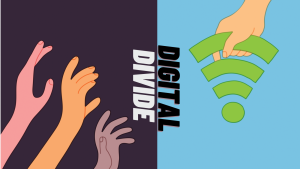The framework outlined by Sieck et. al (2021) regarding economic opportunities is both enlightening and informative. While numerous applications and tools are available, not everyone has access to them, and even those who do may struggle to utilize them effectively. A particularly insightful aspect of the article is its discussion of various outlets that provide individuals with internet access and programs that can facilitate this access (Sieck et. al, 2021). From my perspective, the most important element highlighted in Figure 1 of Sieck et. al (2021) is education. Education enables individuals to attend classes in school that teach computer technology skills, as well as how to navigate different applications and find resources for themselves and others. Figure 1 effectively illustrates the impact of the digital divide, incorporating factors such as education, employment, healthcare, economic opportunities, and neighborhoods. These factors contribute to why not everyone has access to the internet.
According to Sanders and Scanlon (2021), having access to the internet is a human right (Sanders and Scanlon, 2021). This issue is social in nature because those with internet access benefit from the vast resources available online, while those without access do not have the same opportunities. One particularly impactful statement from Sanders and Scanlon for me was the assertion that internet access constitutes a human right. Previously, I had not considered this; I viewed it primarily as an issue of affordability based on one’s socioeconomic status within their community. Sanders and Scanlon’s (2021) arguments were persuasive, as they detailed the resources the internet provides and how only those who cannot afford it lack access to these resources (Sanders and Scanlon,2021). I often wonder what the world would be like if everyone had equal access to online resources. For example, children in impoverished communities could perform better in school with the same internet access as those in affluent neighborhoods. Sanders and Scanlon aptly define the problems, emphasizing that human rights should be available to everyone, regardless of their life circumstances.
In Craig et. al, (2021) I believe that the human rights approach is a promising strategy for social workers advocating for individuals who do not receive the same rights as others due to their income, community, and education. However, I also think it’s important to recognize that the human rights framework may not be entirely realistic in ensuring everyone has internet access, given the varying definitions of human rights across different countries. Craig et. al, (2021) approach of using therapeutic engagement is, in my opinion, effective. This method allows individuals to discuss the challenges they face and develop strategies to address those issues.

References
Craig, S. L., Iacono, G., Pascoe, R., & Austin, A. (2021). Adapting Clinical Skills to Telehealth: Applications of Affirmative Cognitive-Behavioral Therapy with LGBTQ+ Youth. Clinical social work journal, 49(4), 471–483. https://doi.org/10.1007/s10615-021-00796-x
Sanders, C. K., & Scanlon, E. (2021). The Digital Divide Is a Human Rights Issue: Advancing Social Inclusion Through Social Work Advocacy. Journal of human rights and social work, 6(2), 130–143. https://doi.org/10.1007/s41134-020-00147-9
Sieck, C. J., Sheon, A., Ancker, J. S., Castek, J., Callahan, B., & Siefer, A. (2021). Digital inclusion as a social determinant of health. NPJ digital medicine, 4(1), 52. https://doi.org/10.1038/s41746-021-00413-8
Hey Ms.Toya, You made some really strong points about how digital access connects to education and opportunity. I liked how you highlighted education as the key factor in Sieck et al.’s framework it really is the foundation that helps people develop the digital skills needed to navigate resources independently. It’s eye-opening to think about how much of life depends on having those skills, from applying for jobs to managing healthcare.
Your reflection on Sanders and Scanlon’s argument about internet access being a human right also stood out to me. It’s true that many of us tend to see technology as a privilege or financial issue, not realizing how deeply it affects equality and social justice. The example you gave about children in lower-income communities having the same internet access as those in wealthier areas made that connection very real.
I also agree with your thoughts on Craig et al. (2021). Their approach shows how technology, when used intentionally, can become a tool for inclusion rather than exclusion. Even though achieving global digital equity may not happen easily, I think raising awareness and creating community-level solutions are steps in the right direction. Your post really captures how important it is for social workers to see digital inclusion as part of our advocacy for human rights.
The statement of internet being a human right was impactful for me as well. I had never considered this either and it really is true. The idea of not having access to internet, while trying to function in todays society seems impossible. You brought up education, which really is incredibly important, not on formally, but also is important for self help and more day to day needs. With most things like directions, recipes, how tos…the list goes on, so much of our basic life skills are learned on the internet.